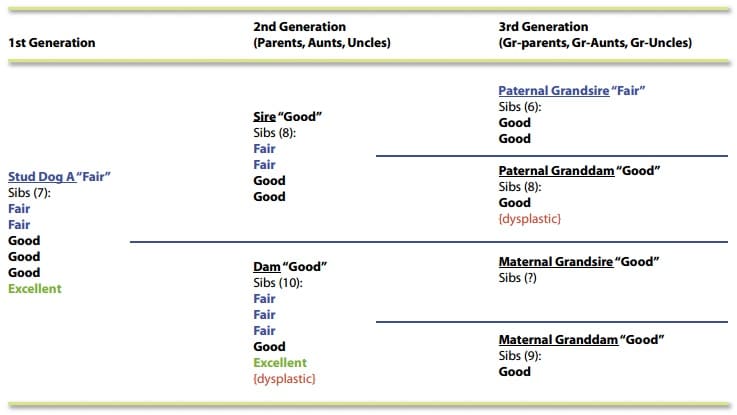What Is A Vertical Pedigree And How Does It Create Healthy Bulldogs?


Vertical Pedigrees and English Bulldog Health

As you all know, we take the health of our bulldogs very seriously. There is nothing more beautiful than the sight of a well-bred bulldog that is healthy and functional. This ideal is the motor that drives us and is at the heart of who we are at Bruiser Bulldogs. Obviously, the ideal bulldog is very important to us. However, it’s important to explain how we reach these goals, and a vertical pedigree is a big part of that.
What Is A Vertical Pedigree And How Does It Create Healthy Bulldogs?
How you get to a destination is often as important as the end itself. In light of this truth, let’s talk about vertical pedigrees.
One would think that creating a healthy, functional bulldog would be simple enough. However, simply breeding functional parents free of any health issues and, may not give you healthy offspring. Unfortunately, genetics and hereditary issues are not as black and white or as simple as this. We test all of our adult bulldogs for health issues such as the eyes, patellas, heart, trachea, and elongated soft palate. But, there are more to genetics than simply healthy parents.
That’s why we rely on a vertical pedigree database to help us understand the health of our bloodlines. The vertical pedigree differs greatly from the traditional pedigree that we are all accustomed to. Traditional pedigrees expand horizontally. This means they are read from left to right with relatively few dogs appearing at the far left of the pedigree and increasing in the number of ancestors listed to the right.

We know that the health of the dogs to the left (the mother, father, and grandparents) most directly impact the resulting offspring. The problem lies in the fact that there are only six participants in this sample size. A small sample size is a problem when trying to develop a healthy pattern of possible offspring. In short, the health of six dogs is simply not enough evidence to prove the viability of healthy bloodlines. In a traditional pedigree, you can’t increase the number of dogs without using data from distant relations. These distant relatives are somewhat unreliable in predicting the health of the offspring. While adding distant relatives might increase the sample size, unreliable data is not going to make the offspring any healthier!
The solution to this problem is the vertical pedigree. The value of the vertical pedigree begins with this simple truth: full siblings are equally genetically similar to each other as they are to their parents. This means you can generate as much or more health data in a bloodline from each sibling in the litter as you can from health testing the parents. It also means that you can generate more health data by factoring in the health of the siblings than just looking at the health history of grandparents or great-grandparents.
Oftentimes health issues that are not recognizable through a horizontal pedigree become blatantly obvious when looking at the data of a vertical pedigree. Below is a great example of a vertical pedigree charting hip dysplasia in Labrador Retrievers. Notice there is information on the health of the siblings, the parent’s siblings and even in some cases the siblings of the great grandparents. This is great information!

How does the vertical pedigree affect how we go about our day-to-day decision-making at Bruiser Bulldogs? For starters, we are incredibly interested in the health of our offspring. Many of our adopters have noticed that we often ask for updates on their puppies.
We do that for two reasons. To start, we absolutely care about our adopters. Second, we record the health of the dog in our vertical pedigree database. That informs any breeding decision we make from then on. Which allows us to add to our current information. We have information on the health of the parent bulldogs (and their siblings), the health of grandparents and great grandparents (and their siblings) as well as the health of the littermates. We use that data to decide which dogs get held back as parents. The vertical pedigree allows us to better reach our goal of breeding a bulldog that does not suffer from health issues.

Let’s compare the amount of data we use to what 90% of other bulldog breeders use, which is nothing. As a result, most breeders are closing their eyes and hoping for the best. No wonder the bulldog has health issues:)
Take care bulldoggers,
Mitch Wysong
Check Out our Available Puppies Here

Bruiser Bulldog’s Reviews








